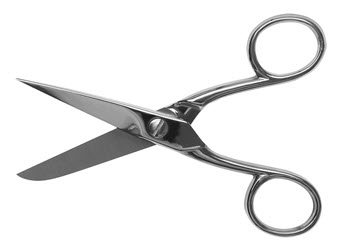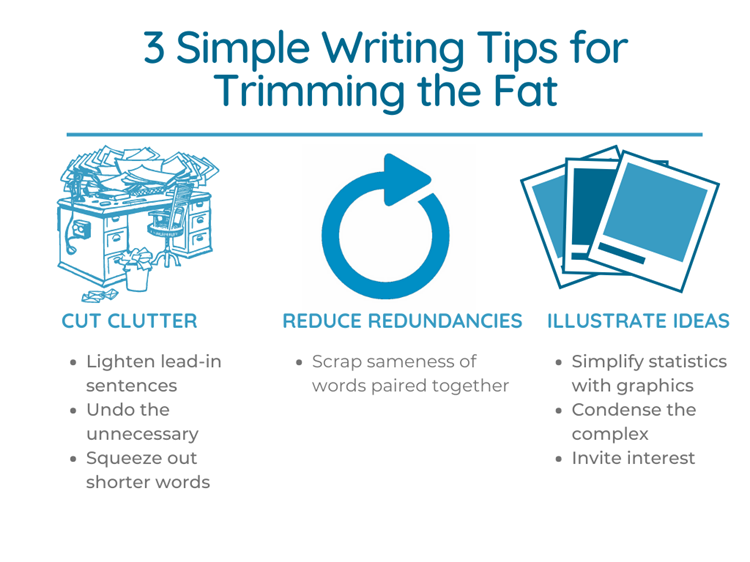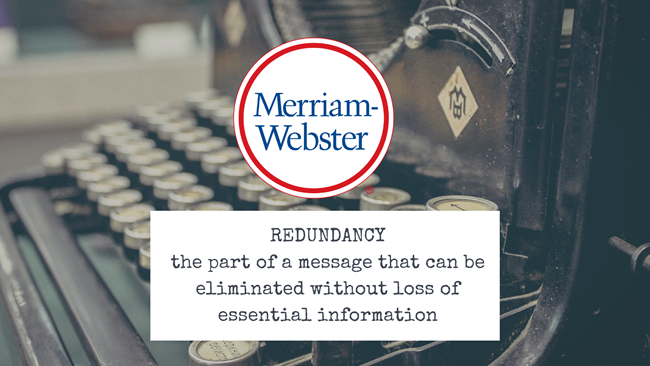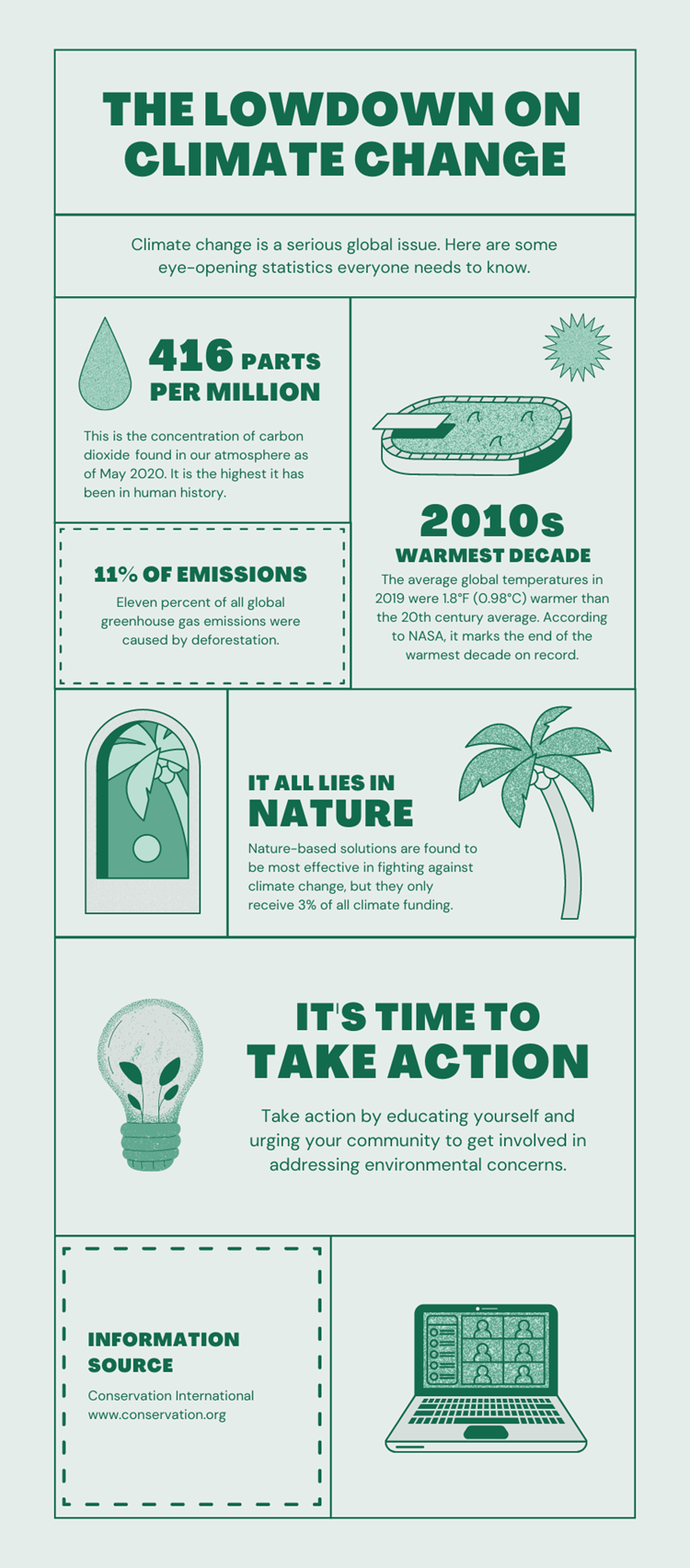 Don’t you wish people followed the advice of Thomas Jefferson about trimming excess words?
Don’t you wish people followed the advice of Thomas Jefferson about trimming excess words?
Especially the politicians.
A colleague at a consulting firm once accused our auditing area of being paid by the pound.
- The American weight
- Not the British currency
- If you read one of our reports, you probably agreed.
Few of us wish to be known for wordiness, especially in business writing. So, I’ve updated this 2013 post to offer tips for eliminating words you don’t need.
Who couldn’t afford to lose fat from our business writing?
Trimming Excess Words
Trimming the fat works in many ways.
- In our diet, it offers a healthier alternative.
- Trimming the excess in business writing removes bloat (which leads to BORING)
- And it rescues your message from being drowned in a sea of words.
But the biggest reason you’ll want to snip away is how happy it makes your customers.
An Excess of Options
When SlideShare was all the rage, I created a presentation, 3 Simple Business Writing Tips for Trimming the Fat. It was one of my most viewed, downloaded presentations.
- You can download the original presentation (link under Helpful Downloads)
- And the condensed graphic below
- Or go for the details with this post, plus both downloads.
Having multiple options is one time excess is good. You decide what works for you.
 1. Cut Clutter
1. Cut Clutter
Do you have a breaking point with a cluttered desk? Mine is usually accompanied by a scream while muttering, “I cannot stand this anymore.”
- Tap into that feeling when you look at your business writing.
- Sharpen your scissors.
- And cut the clutter.
Lead-in sentences
I admit I struggle with this one. I often pack on words before getting to my point in a sentence.
- Sometimes the words help keep your writing real (especially in blogging).
- Other times, the excess words add no value.
- Zero in on lead-in sentences. Ask yourself, does this add value?
For example, in the above bullet point, I started with the following.
- Learn to zero in on lead-in sentences.
- Does “Learn to” add value? I didn’t think it did, so I deleted it.
- Learn to Zero in on lead-in sentences.
Blogging uses a more casual tone than other types of business writing. Deciding if a lead-in adds value is subjective. View the words through the lens of your reader.
For example:
When SlideShare was all the rage, I created a presentation…
- Does this add value?
- Let’s look at the alternative.
When SlideShare was all the rage, I created a SlideShare presentation…
- BORING
- I decided to keep the lead-in.
- Do you agree? Does it make the sentence more interesting?
Undo the Unnecessary
How many times have you read instructions and thought, “Well, DUH.”
- Balance enough information for clarity
- Without stating the obvious.
- Do the words add value? Undo the unnecessary.
Funny Tab provided hilarious examples of the unnecessary, such as the following.
- An American Airlines packet of nuts: Instructions: open packet, eat nuts.
- A knife sharpener: Caution: knives are sharp.
- On a bottle of rum: Open bottle before drinking.
Well, DUH.
Squeeze Out Shorter Words
Scientific journals dance though the hallways of complex words. But even technical business writing can cut the excess by using shorter words.
Instead of…
The study sought to explicate multitudinous theories on the causes for global warming.
Try this…
The study sought to explain various theories on the causes for global warming.
2. Reduce Redundancies
Unnecessary words tiptoe into redundancy. Redundancies are sneaky creatures. You could say they are repeat offenders. 😉
- Added bonus – a bonus is something you “add” so no need to say it’s added
- Basic fundamentals – that’s what fundamentals are – basic
- End result – doesn’t your result come at the end?
3. Illustrate Ideas
What would the meme world be without illustrations? Certainly, not as effective – or fun. What makes memes so successful?
- The visuals
- A concise message
- Humor (mostly)
Consider using illustrations or images to convey your message to keep it simple, clear, and uniquely yours.
Simplify statistics
The following is from a Canva template. The first example puts the information into a text report (that I edited for illustrative purposes). The second shares the information in a Canva infographic.
Which do you prefer? Text or illustration?
Text
Climate change is a serious global issue. In May 2020, the concentration of atmospheric carbon dioxide reached a historical high of 416 parts per million (PPM) since such measurements began. Additionally, NASA reports the decade beginning in 2010 was the warmest recorded, ending with an average of 18° Fahrenheit (0.98 Celsius) warmer than the 20th century average.
Illustration
Condense the complex
Flow charts and other graphics are a simple, clear way to condense complex processes into a quick, visual format. Hubspot provides some great examples, (such as the one shown below).
Invite interest
Like the meme, good illustration and concise text invite interest from rapidly scrolling customers. Take another look at existing business communication and remove the excess through illustration.
Helpful Downloads
Never knew there were so many ways for trimming excess words, did you? I love a plethora of choices. I know, I should use a simpler term but I love the word plethora.
Three simple ways to start your snip job are to:
- Cut the clutter.
- Reduce redundancies.
- Illustrate ideas.
As promised, the following are helpful downloads (hopefully) to battle the bloat of too many words.
- SlideShare presentation – 3 Simple Business Writing Tips for Trimming the Fat
- Condensed graphic of 3 simple tips
- Redundant Words Checklist – download this list of commonly used redundant words to eliminate the excess. Are your favorite redundancies on the list?
What methods do you use for trimming the fat? Share your tips in Comments.
Note: This is an update to the original post that published on July 22, 2013.
====================
Helping you Keep it simple, clear & uniquely yours
=====================






Very good advice Cathy, and succinctly put in your presentation!
Thanks, John. I appreciate that coming from the Master. 😉
Good point and slide show Cathy less is more that’s why twitter is so popular. Keep up the good work.
Thanks, Darnell. We do like it simple around here. 🙂
The tips work for all kinds of writing. One of my editors loves assigning me “pithy” little pieces. She says I have a knack for writing right. The problem arises when you already write tight and still need to trim words.
The most overused words tend to hide in plain sight: That, which and of. Seek those out in your copy. If they aren’t necessary, cut them. (And say good by to awkward wording such as, “The problem was that that word didn’t belong in that sentence.”)
Excellent examples, Paula. I find I miss those hidden words more and more. That’s what I get for writing like I talk. 😉
Um…my talent apparently doesn’t extend to avoiding typos. “…write tight.” Then again, writing tight is writing right.
LOL! 😀 An effective slip of a letter. 😉
Agree with everything except, maybe, ‘morning’ as I’ve seen people totally miss the a.m. marker…
Just for contrast, I understand Dickens was paid by the word – which is why…
Good point, but hopefully, they are not having meetings at 9 at night. 😉